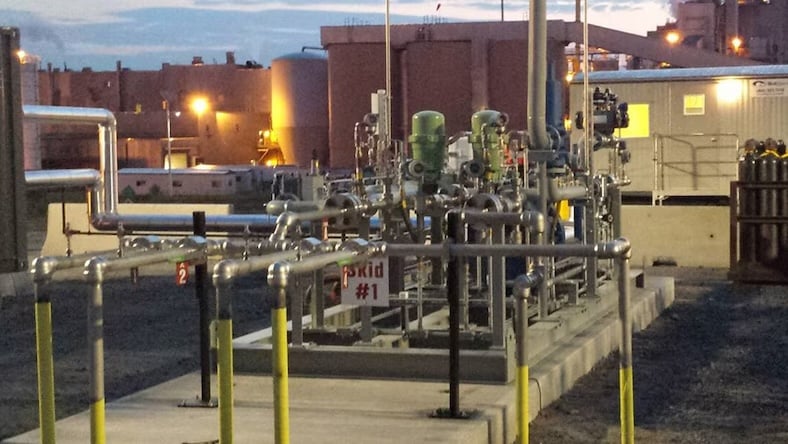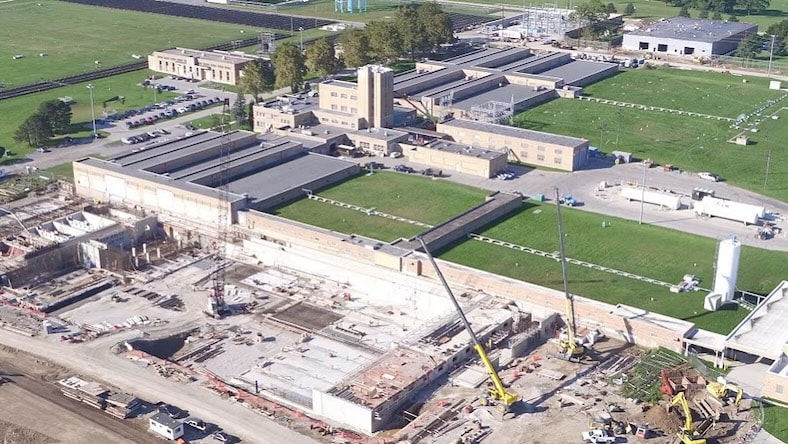& Construction

Integrated BIM tools, including Revit, AutoCAD, and Civil 3D
& Manufacturing

Professional CAD/CAM tools built on Inventor and AutoCAD
Utility companies, particularly in energy sectors, use outage management software to efficiently predict, detect, manage, and respond to power outages.
Outage management software (OMS) is vital to the AECO industry, supporting architecture, engineering, construction, and operations across large-scale industrial projects, city infrastructure, and residential/commercial developments.
Architects use OMS data to design resilient, energy-efficient buildings with backup power systems for critical projects like hospitals and data centers. Engineers integrate OMS into city grids and industrial infrastructure to ensure power reliability and design systems with predictive maintenance capabilities for outage resilience. During construction, OMS monitors power reliability, preventing outages from disrupting schedules. It also coordinates with utility providers to ensure smooth grid connections.
Facilities managers use OMS to maintain power in mission-critical operations (for example, hospitals or airports), while city operators manage essential services and prioritize energy restoration for critical zones during outages.
For civil engineers, OMS is invaluable in managing large-scale industrial projects, city infrastructure, and residential/commercial developments by ensuring power reliability and reducing downtime. In industrial facilities like factories and refineries, OMS streamlines power management across complex systems, minimizing disruptions that could halt production.
For city infrastructure, OMS is essential in maintaining continuous service for critical public systems such as transportation, emergency response, and municipal utilities, enabling engineers to prioritize energy restoration in critical areas.
In residential and commercial projects, OMS helps civil engineers optimize grid integration for efficient power distribution and sustainable energy management throughout the building lifecycle. By using OMS, civil engineers can enhance operational efficiency, reduce costs, and improve the resilience of essential infrastructure.
The benefits of outage management software make it a powerful tool for improving service reliability and operational performance:
OMS automates outage detection and quickly pinpoints faults, enabling faster dispatch of repair crews and reducing downtime.
OMS optimizes the allocation of repair crews and equipment, prioritizing critical areas and minimizing the time and cost of restoration efforts.
The software keeps customers informed with real-time updates on outages, estimated restoration times, and causes, enhancing transparency and reducing the burden on customer service.
Using historical data and predictive analytics, OMS helps utilities forecast and prevent outages, improving grid reliability and enabling proactive maintenance.
OMS automatically generates detailed reports on outage management and response, supporting regulatory compliance and providing valuable insights for infrastructure planning and improvement.
By reducing the duration of outages, enhancing streamlining workflows, and preventing disruptions, OMS leads to significant cost savings while improving overall operational efficiency and grid resilience.
Plan, design, construct, and manage buildings with powerful tools for Building Information Modeling.
Process Pipeline Services
A New England pipeline firm uses AutoCAD’s Plant 3D toolset to help streamline natural gas pipeline projects.
Arcadis
A global design and engineering consultancy uses the Autodesk AEC Collection to modernize an 80-year-old water treatment facility.
Hunziker Betatech
A Swiss engineering firm uses Revit and BIM Collaborate Pro to combine two wastewater treatment plants into one new location.
Discover the latest feature development pipeline for essential civil infrastructure tools like Civil 3D, InfraWorks, Revit, and ReCap Pro.
Learn how the latest features in Info360 Insight make water and wastewater network software more powerful and flexible than ever.
See how a water services company improved pump maintenance and service reliability for over 418,000 residents.
Outage management software (OMS) is a tool utility companies use to detect, manage, and address power outages and service disruptions, especially in the energy, gas, and water sectors. OMS integrates data from smart meters, grid monitoring systems, and customer reports to identify outage locations quickly, dispatch repair crews, and coordinate restoration efforts. It provides real-time updates to customers about outages and restoration times, helps prioritize critical infrastructure, and generates reports for performance analysis and regulatory compliance. By improving response times, resource management, and communication, OMS enhances grid reliability and customer satisfaction while reducing operational costs.
Outage management software (OMS) benefits AECO companies by ensuring project continuity and minimizing disruptions during construction and operations. It enhances resource coordination with utility providers, helping maintain uninterrupted power supply for large projects. OMS also supports the design of energy-resilient infrastructure by informing backup systems and energy redundancy in critical buildings like hospitals or industrial complexes. For operations, it improves power reliability and reduces downtime, while its data helps plan smarter, more resilient infrastructure. OMS also aids efficient resource management and proactive energy strategies, contributing to cost savings and sustainability.
Outage management software (OMS) can be integrated with existing systems such as geographic information systems (GIS), supervisory control and data acquisition (SCADA), customer information systems (CIS), advanced metering infrastructure (AMI), enterprise resource planning (ERP), and mobile workforce management (MWM) systems. These integrations enhance OMS functionality by providing real-time data for outage detection, improving fault resolution, optimizing resource deployment, and helping to streamline communication with customers and field crews. This integration leads to more efficient and automated processes, faster restoration times, and better overall service reliability.
The main purpose of an outage management system (OMS) in distribution systems is to efficiently detect, manage, and resolve power outages. OMS helps utilities identify outage locations, coordinate the dispatch of repair crews, and restore power as quickly as possible. Integrating real-time data from smart meters, GIS, and SCADA systems allows utilities to automate fault detection, track the progress of repairs, and prioritize restoration efforts, particularly for critical infrastructure. OMS also enhances customer communication by providing timely updates on the status of outages and estimated restoration times, improving overall service reliability and customer satisfaction.
Utility companies and organizations can customize an outage management system (OMS) to fit their specific needs. Customization options include seamless integration with existing systems like GIS, SCADA, and AMI; scalability to accommodate various utility sizes; and tailored user interfaces and reporting features for different roles. Utilities can also customize outage prioritization based on critical infrastructure or customer types, automate workflows, and adjust communication features for customer updates. Predictive analytics can also be integrated to anticipate outages and schedule preventive maintenance. This flexibility ensures that the OMS aligns with the utility’s unique operational and regulatory needs.




